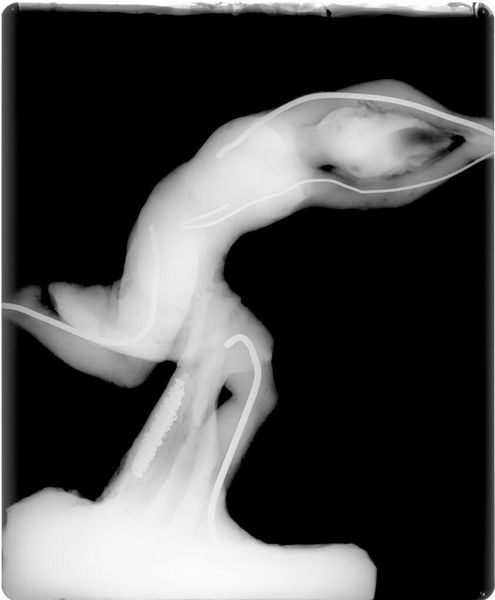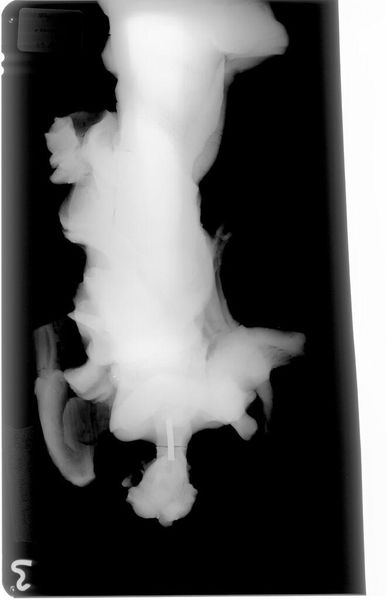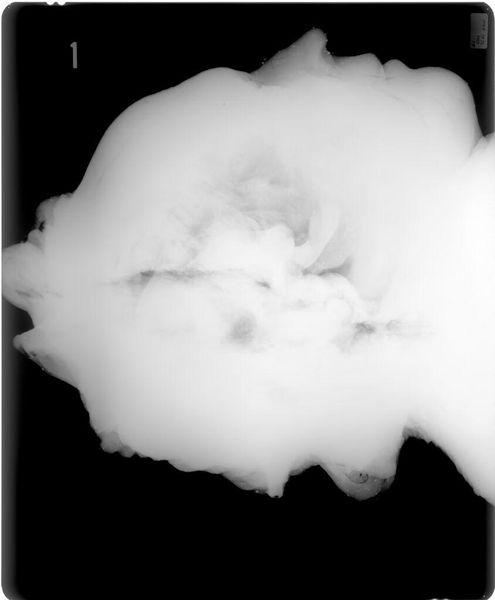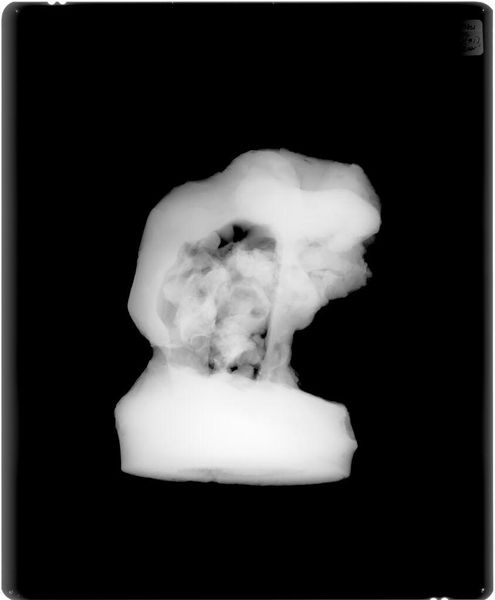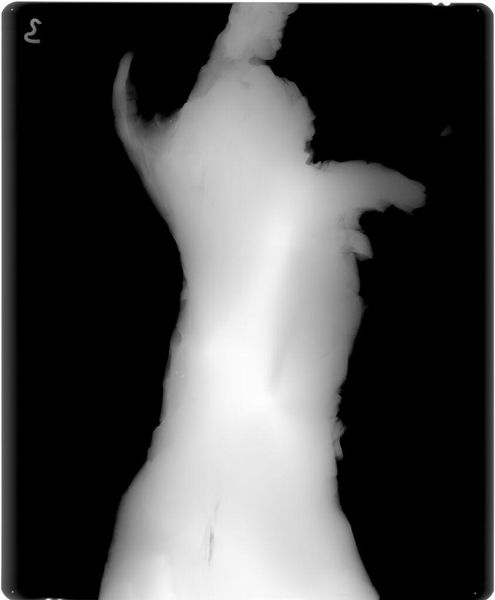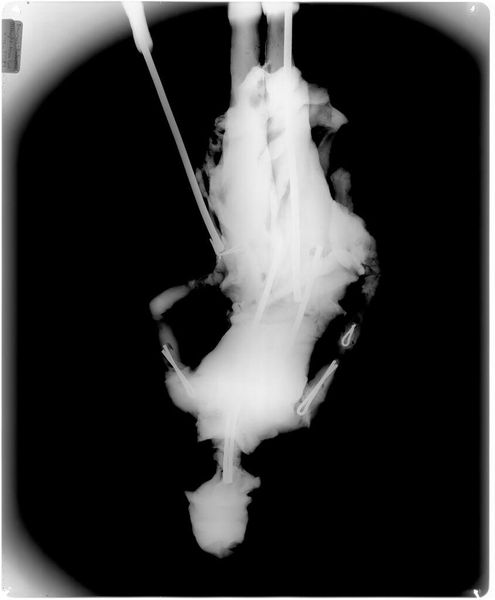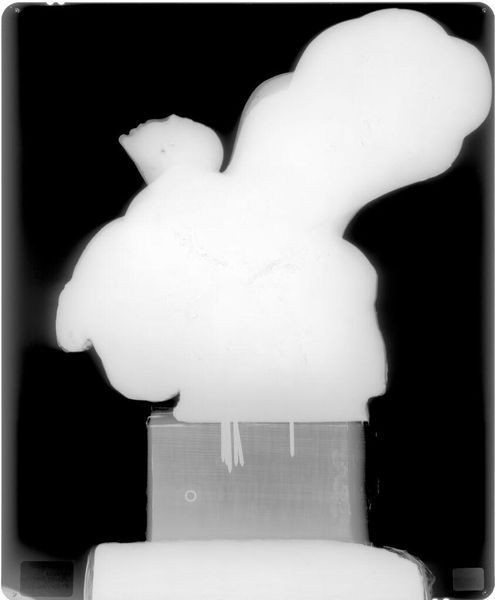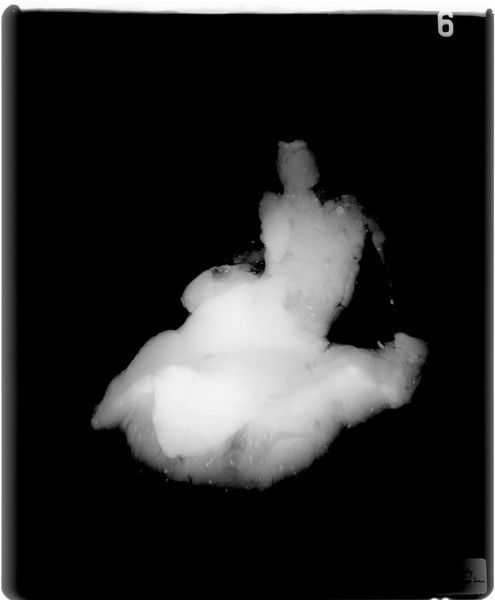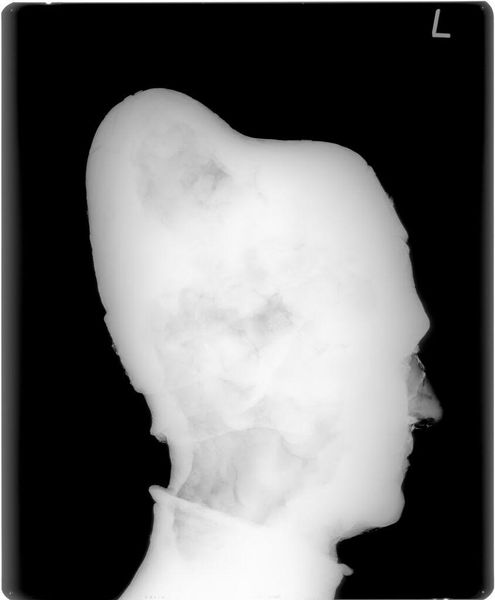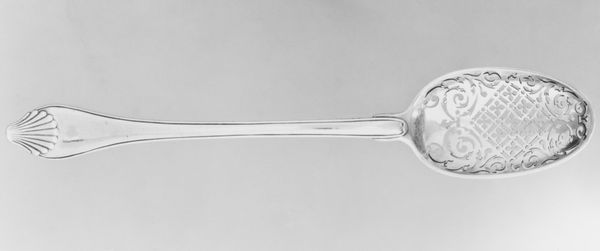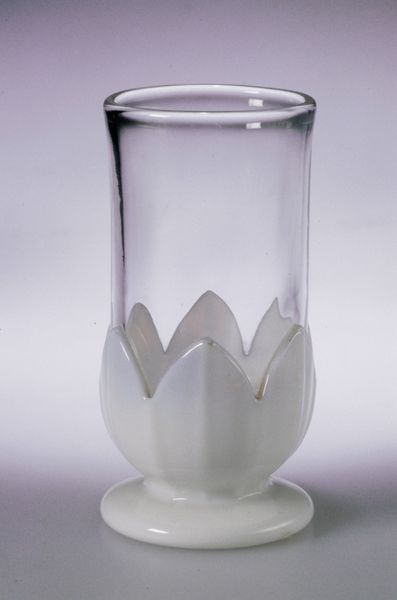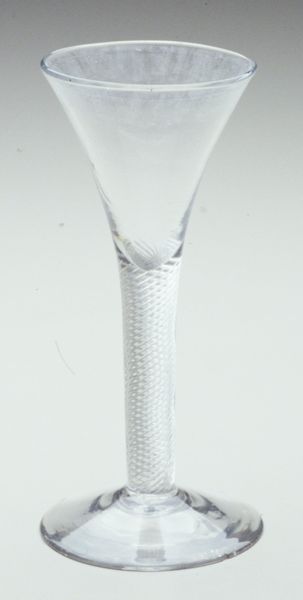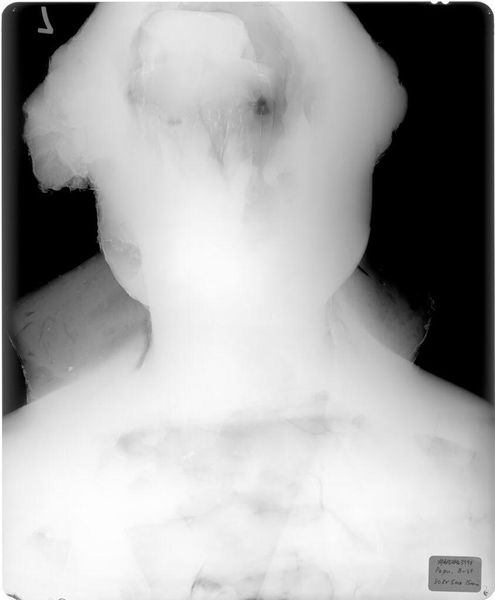
X-radiograph(s) of "Terra Cotta"
Copyright: CC0 1.0
Curator: We are looking at an X-radiograph of "Terra Cotta", an artwork by Jean-Antoine Houdon, housed here at the Harvard Art Museums. The piece is undated. Editor: How intriguing! It's ghostly, almost spectral. The monochrome palette and stark contrast create a sense of mystery, revealing unseen layers within the sculpture. Curator: Indeed. Observe the formal arrangement: the vertical spine bisecting the mass, the stark juxtaposition of positive and negative space. It calls into question our assumptions about form. Editor: Yes, that central spine. A clear symbolic axis. Is it meant to evoke the spine of a person, a vital life force encased within the clay? The sculpture almost becomes a metaphor for the human condition. Curator: Perhaps. Or it could be purely structural, revealing the armature supporting the terra cotta itself. It offers a new way of observing line and form. Editor: Possibly, but the overall presentation prompts me to contemplate mortality and the hidden structures that support outward appearances. This x-ray allows us to see the inner workings, the skeleton. Curator: Quite right. We see not only the external form, but also the internal structure, prompting us to consider the relationship between surface and depth. Editor: A potent image that forces us to consider what is revealed and concealed by art. Curator: Precisely. It's a captivating play of light and shadow, isn't it?
Comments
No comments
Be the first to comment and join the conversation on the ultimate creative platform.
